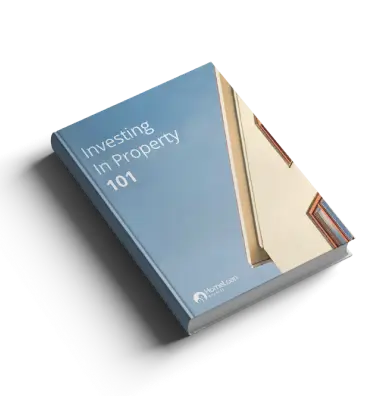Borrowing up to 95% of the purchase price or Loan To Value Ratio (LVR) to buy an investment property is now only available through a handful of lenders.
By building a strong application, you could soon be on your way to investing in real estate with a 95% investment loan.
How Do I Qualify?
- Your deposit: Most lenders require you to have saved 5% of the purchase price but some of our lenders will allow for your deposit to come from equity in another property, a personal loan or a gift from your parents or a close relative.
- Investment portfolio: Some lenders will only allow you to borrow 95% LVR if you have equity in another property. However, exceptions can be made.
- Negative gearing: Only some lenders take negative gearing benefits into account so you’ll need a strong income.
- Credit history: Your credit file should be clear of black marks including defaults, judgments, bankruptcy and too many credit enquiries.
- Employment: Being in your current job for 6 to 12 months is a requirement for most lenders but not for all of them.
- Your investment property: Lenders prefer standard properties in capital cities or major regional locations however some lenders can consider exceptions.
Not sure if you’re eligible?
Get in touch with one our 95% investor loan specialists on 1300 889 743 or by completing our free assessment form today.
Property Investment Guide 101
Learn the ins & outs of investing in properties from an experienced property investor and founder of Home Loan Experts, Otto Dargan.

Can I Buy Multiple Investment Properties?
From 2015 onwards, the way that borrowing capacity is calculated has changed. What it means for Australians with multiple investment properties is that they will find it harder to borrow the amount they need.
Previously, many banks would’ve taken negative gearing benefits when assessing your serviceability and assess your current debts at the actual interest rate that you’re paying.
Now, few lenders will include tax deductible interest and many will assess your existing loans at a higher interest rate than what you’re actually paying.
Which lenders will approve the amount you need?
Get Enrolled Home Buyers Program
Thinking of buying a home?
Learn how to buy a house and avoid costly mistakes in under 2 hours.
Learn MoreHow Do They Assess My Borrowing Power?
We have access to other lenders not governed by APRA such as specialist and non-bank lenders.
This allows us to help good-quality borrowers to qualify for a loan and expand their property portfolio.
How To Get A Great Interest Rate
The better your situation, the more lenders you can qualify with.
If you have equity in another property we can usually get you a significantly discounted rate or if you’ve saved your deposit yourself.
Specialist lenders don’t charge a large premium so if you don’t qualify for an interest rate discount, it’s not a big deal.
We’ll work to get your 95% investment loan approved so you can into the property market and then, in 2 to 3 years, we’ll refinance your investment loan at a better interest rate.
Can I Get Waived LMI?
Yes, we have lenders on our panel who can provide no-LMI investment loans, even if you’re borrowing 95% of the property value.
To find out if you qualify for a waived-LMI investment loan, read our page on the topic.
How Can I Reduce My LMI?
Lenders Mortgage Insurance (LMI) is an insurance premium charged by most lenders for risky loans. Typically, this is for loans that are for more than 80% LVR.
Mortgage insurance is basically there to protect the banks in case you default on your investment loan and the cost can quickly add up depending the LMI premium rates of the lender that you’re applying with and the amount that you’re borrowing.
For example, for a $300,000 property on a 95% investment loan, you could be paying almost $8,000 in LMI. Use the LMI calculator to get an accurate figure of how much you could be paying in LMI for the property you want to invest in.
Of course, lenders don’t all have the same LMI premium rates but the problem is that they don’t usually share this information to the public so it’s almost impossible to compare if you’re trying to do it by yourself.
Luckily, as a mortgage broker, it’s a part of our job is to compare LMI rates and get you the best deal possible on your mortgage insurance.
One strategy is to capitalise or ‘add’ the LMI premium on top of your investment loan, bringing your total loan to 97% LVR.
What it means for you is that you avoid having to pay LMI upfront and simply pay it off, interest-free, when you start making your mortgage repayments.
Another tip is to try to save a little bit more for your deposit and bring your LVR down to 94% plus LMI. This will put you in a lower LMI bracket which means you’ll reduce your mortgage insurance premium.
Apply for 95% investment loan
We’re specialists in 95% LVR investment loans.
To find out if you qualify, call us on 1300 889 743 or complete our free assessment form today.
Frequently Asked Questions
Do Lenders Check Credit Scores For 95% Investment Loans?
Some lenders use credit scoring when assessing your application and others don’t. Part of our assessment will be working out which lenders you qualify with.
As a general rule, lenders that credit score have lower interest rates but keep in mind that it’s a mortgage brokers to compare interest rates for you anyway.
What Are Exposure Limits?
Is It More Expensive To Go With A Non-bank?
Still need answers? We're here to help!
Ask an expertOur team of mortgage experts will assist you within 24 hours.
